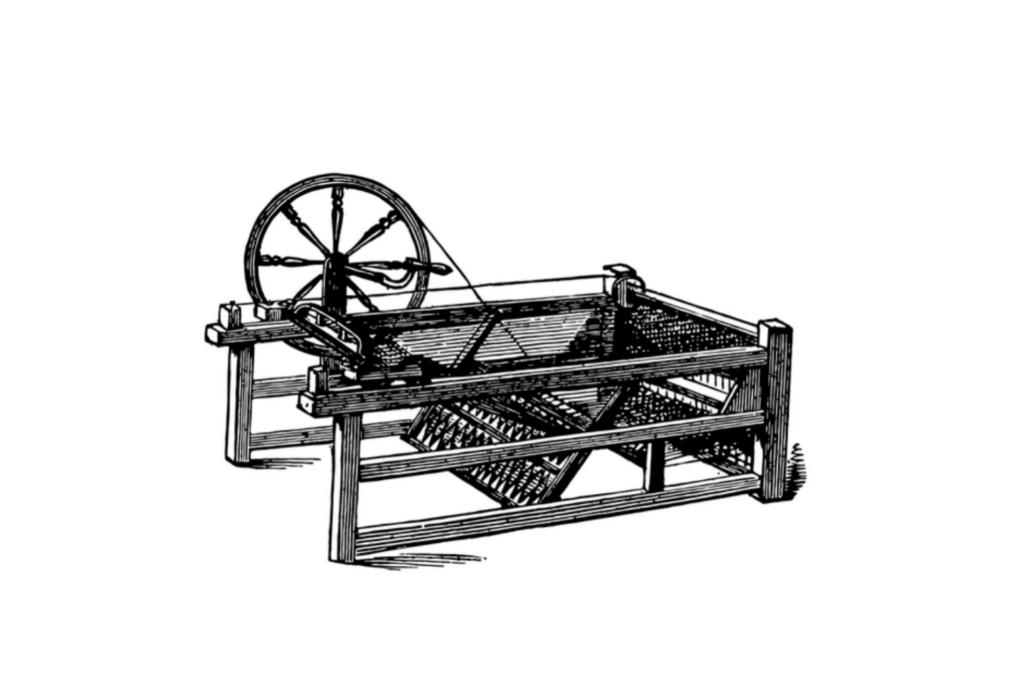
Introduction of Spining Jenny
The spinning Jenny was a revolutionary machine that greatly increased the productivity of the textile industry during the Industrial Revolution. Invented by James Hargreaves in 1764, it was one of the key innovations that kickstarted the mechanization of spinning processes.
The spinning jenny allowed multiple spools of yarn or thread to be spun simultaneously, a major improvement over the single-spool spinning wheel used previously. This increased the output of an individual worker by up to 8 times. The spinning jenny contained a series of spindles arranged in two parallel rows, with the spindles turned by a wheel and belt system.

This invention was a crucial step in the development of mass production techniques and factories. It helped meet the growing demand for yarn created by advances in weaving like the flying shuttle. However, the spinning jenny faced opposition from skilled workers who feared unemployment from the productivity gains.
While later superseded by more advanced spinning machinery like the water frame and spinning mule, the spinning jenny was a pioneering invention that demonstrated the potential of mechanized manufacturing. It paved the way for the widespread adoption of powered machinery in textile mills and the eventual rise of the factory system during the Industrial Revolution.
Application Case of Spining Jenny
Product/Project
Technical Outcomes
Application Scenarios
Crompton’s Mule
Allowed the production of finer and stronger yarn, enabled the spinning of different types of fibers like cotton and wool
Textile mills producing high-quality yarn for clothing and other applications
Arkwright’s Water Frame
Produced stronger and more consistent yarn than the spinning jenny, enabled the use of water power for spinning
Factories and mills with access to water power sources, enabling increased production volumes
Roberts’ Self-Acting Mule
Automated the spinning process, reducing labor requirements and increasing production efficiency
Large-scale textile factories aiming for high productivity and cost savings
Ring Spinning Frame
Enabled continuous spinning, producing yarn of consistent quality and strength
Modern textile mills requiring high-volume, consistent yarn production for various applications
Air Jet Spinning
Eliminated the need for spindles, enabling higher spinning speeds and reduced maintenance
Textile mills focused on high-speed production of coarse and medium-count yarns
Technical Challenges of Spining Jenny
Improving Spinning Efficiency
Developing more efficient spinning mechanisms to increase productivity and reduce energy consumption
Enhancing Yarn Quality
Improving techniques for producing higher quality and more consistent yarn
Automating Processes
Exploring automation technologies to streamline spinning operations and reduce labor costs
Sustainable Materials
Investigating the use of sustainable and eco-friendly materials in spinning processes
Integrating Digital Technologies
Leveraging digital technologies like AI and IoT to optimize spinning operations and quality control
To get detailed scientific explanations of the spinning Jenny, try Patsnap Eureka.

